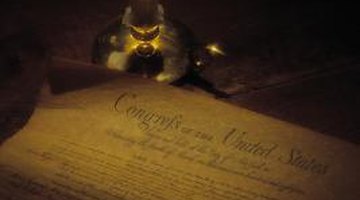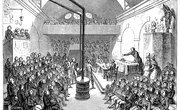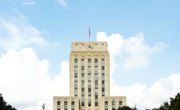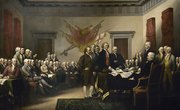Specific constitutional limitations on the U.S. judicial branch of government were established at the Federal Convention in the summer of 1787. During that summer, the framers of the Constitution determined the extent of the judiciary's jurisdiction. They covered the ways in which the judiciary would contend with jurisdiction disputes between states. They also considered how to settle disputes involving foreign states, foreign diplomats and foreign nationals. Finally, they debated whether or not the judiciary could make abstract rulings based on principles rather than actual cases.
The International Context
Questions about Supreme Court jurisdiction arose from President George Washington's request for information from the Framers regarding the outbreak of a war between Britain and France in 1793. Washington realized that many citizens supported the French as a reflection of their own independence from British tyranny. Others worried that the violence in France was too extreme and constituted a security risk for the U.S. The government was pulled in both directions, and Washington wanted to know how to maintain American neutrality in the dispute.
International Affairs
The law that outlines the scope of federal judicial power in international disputes is contained in Article III, Section 2 of the U.S. Constitution. It establishes the role of the Supreme Court, charging it with resolving disputes that involve foreign diplomats, international treaties, officials and other representatives. It would also oversee disputes involving hostilities conducted at sea and disputes with outside governments. Individual state judicial branches could not intervene. Disputes could only be resolved in trials.
State Disputes
Federal courts -- and ultimately the Supreme Court -- were also granted the right to settle disputes between different states. State judiciaries would likely rule in the interest of their own states, so judicial neutrality was resolved by ceding this power to the federal government. Crimes and disputes that crossed state boundaries would automatically go to the lower federal courts. The Supreme Court, however, could oversee these cases and -- if needed -- grant new trials in the appeals process.
Case or Controversy
Questions also came up about whether or not any U.S. courts could rule on hypothetical questions. The absolute prohibition developed to prevent this sort of ruling became known as the "case or controversy" clause. That is, the Framers concluded that the courts could not take up theoretical disputes or so-called controversies. Jurisdiction only applied to actual disputes between specific, named parties. Without a case in hand, the judiciary could not issue broad proclamations or decrees in international disputes. This clause ultimately protected rights to a fair trial.
Related Articles
References
Writer Bio
Christina Lee began writing in 2004. Her co-authored essay is included in the edited volume, "Discipline and Punishment in Global Affairs." Lee holds a Bachelor of Arts in English and politics from the University of North Carolina at Chapel Hill, a Master of Arts in global affairs from American University and a Master of Arts in philosophy from Penn State University.











